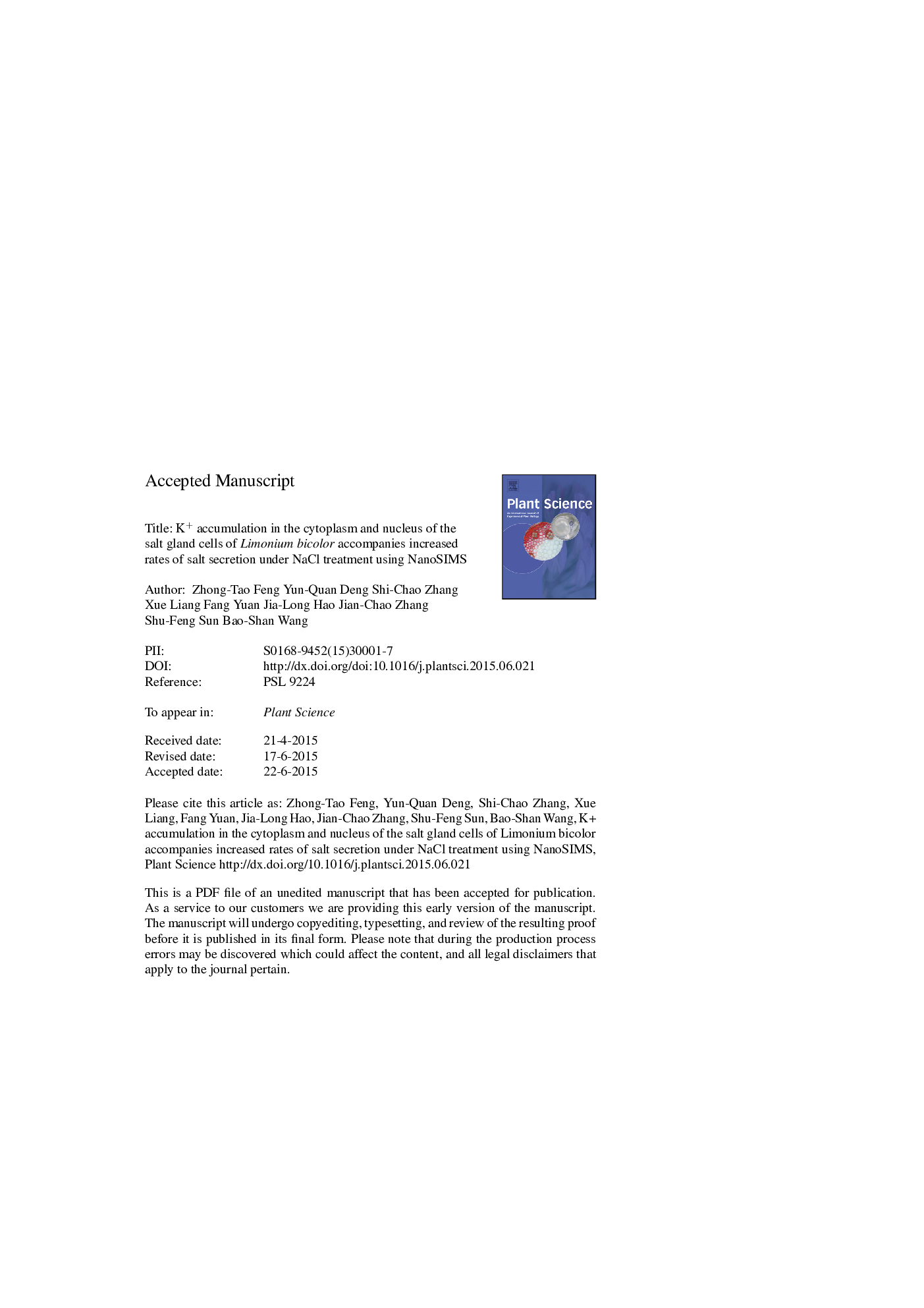| Article ID | Journal | Published Year | Pages | File Type |
|---|---|---|---|---|
| 8357676 | Plant Science | 2015 | 25 Pages |
Abstract
Recretohalophytes with specialized salt-secreting structures (salt glands) can secrete excess salts from plant, while discriminating between Na+ and K+. K+/Na+ ratio plays an important role in plant salt tolerance, but the distribution and role of K+ in the salt gland cells is poorly understood. In this article, the in situ subcellular localization of K and Na in the salt gland of the recretohalophyte Limonium bicolor Kuntze is described. Samples were prepared by high-pressure freezing (HPF), freeze substitution (FS) and analyzed using NanoSIMS. The salt gland of L. bicolor consists of sixteen cells. Higher signal strength of Na+ was located in the apoplast of salt gland cells. Compared with control, 200Â mM NaCl treatment led to higher signal strength of K+ and Na+ in both cytoplasm and nucleus of salt gland cells although K+/Na+ ratio in both cytoplasm and nucleus were slightly reduced by NaCl. Moreover, the rate of Na+ secretion per salt gland of L. bicolor treated with 200Â mM NaCl was five times that of controls. These results suggest that K+ accumulation both in the cytoplasm and nucleus of salt gland cells under salinity may play an important role in salt secretion, although the exact mechanism is unknown.
Keywords
LSCMNMTNanoSIMSMRPhpfPPFDLimonium bicolorDAPI4′,6-diamidino-2-phenylindoleSecondary electronHigh-pressure freezingTemfreeze substitutiondry massUltrastructureSIMSsecondary ion mass spectrometrySalt glandphotosynthetic photon flux densityMass resolving powerSEMLaser Scanning Confocal Microscopescanning electron microscopeTransmission electron microscope
Related Topics
Life Sciences
Agricultural and Biological Sciences
Plant Science
Authors
Zhong-Tao Feng, Yun-Quan Deng, Shi-Chao Zhang, Xue Liang, Fang Yuan, Jia-Long Hao, Jian-Chao Zhang, Shu-Feng Sun, Bao-Shan Wang,
